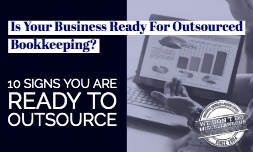In today's fast-paced business environment, numbers alone won't cut it. It's about transforming those numbers into meaningful insights that can guide strategic decisions and drive growth.
Financial analytics offers medium-sized businesses a powerful tool to convert raw data into actionable strategies, giving them a competitive edge. Let's explore how leveraging financial analytics can revolutionize business operations, improve decision-making, and enhance overall efficiency.
The Power of Financial Analytics
Enhanced Decision-Making
Financial analytics provides a comprehensive view of a company's financial health, enabling informed decision-making. By analyzing trends, patterns, and anomalies, businesses can forecast future financial performance and make proactive adjustments.
For example, understanding seasonal sales trends helps in inventory planning and marketing campaigns, ensuring resources are allocated where and when they're most needed.
Risk Management
Financial analytics allows businesses to identify potential risks and vulnerabilities in their operations. By regularly monitoring key financial metrics, companies can detect warning signs early and take corrective action.
For instance, analyzing cash flow data can reveal liquidity risks, prompting businesses to secure additional financing or adjust credit terms with suppliers.
Improved Operational Efficiency
By delving into financial data, businesses can uncover inefficiencies and areas for improvement. Financial analytics can highlight cost-saving opportunities, such as optimizing supply chain logistics or renegotiating vendor contracts. Streamlining these processes not only reduces costs but also boosts productivity and profitability.
Practical Examples of Financial Analytics in Action
Customer Profitability Analysis: A service-based company used financial analytics to evaluate the profitability of individual clients. By identifying clients with low margins, they tailored service packages and pricing models to improve profitability, while focusing marketing efforts on high-value clients.
Budget Variance Analysis: A manufacturing firm implemented financial analytics to compare budgeted versus actual expenses. This analysis revealed overspending in certain departments, prompting a reallocation of resources to align with strategic priorities, ultimately enhancing financial control.
Implementing Financial Analytics Effectively
Set Clear Objectives
Before diving into data analysis, establish clear objectives. Determine what specific insights you need to gain, whether it's improving cash flow management, reducing costs, or enhancing customer profitability.
Invest in the Right Tools
Utilize advanced financial analytics tools and software that can handle large volumes of data and provide real-time insights. Automation capabilities can significantly reduce manual data processing and improve accuracy.
Build a Skilled Team
Ensure your team is equipped with the necessary skills to interpret and act on financial data. Investing in training or hiring skilled analysts can enhance your company's ability to leverage analytics effectively.
Foster a Data-Driven Culture
Encourage a culture where data-driven decision-making is embraced at all levels of the organization. This requires not only providing access to analytics tools but also promoting the importance of data literacy across departments.
The Role of Outsourcing in Financial Analytics
Outsourcing financial analytics can offer medium-sized businesses several advantages, including:
Access to Expertise
Outsourced providers bring a wealth of experience and specialized knowledge. They can offer insights tailored to your business, helping you interpret complex data and develop actionable strategies.
Cost Efficiency
Outsourcing eliminates the need for significant investments in analytics software and training. Instead, businesses can leverage the expertise and infrastructure of external providers, leading to cost savings and increased efficiency.
Scalability
As your business grows, so do your analytics needs. Outsourcing allows for easy service scaling, ensuring you have the resources required to handle increased data volumes and complexity.
Financial analytics isn't just about crunching numbers; it's about unlocking the strategic potential of data to drive business success. By implementing financial analytics effectively and considering the benefits of outsourcing these services, medium-sized businesses can transform their financial data into a strategic asset.
Embracing a data-driven approach will enhance decision-making and risk management and pave the way for sustainable growth and competitiveness in the marketplace.














